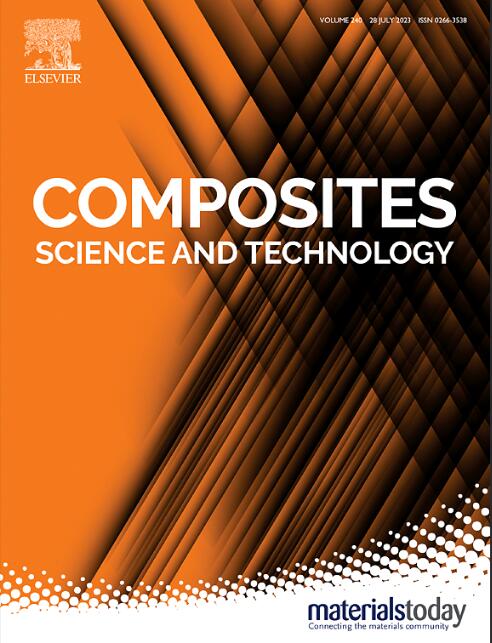Modified rule of mixtures and Halpin-Tsai models applied to PCL/NiMnInCo 4D printed composites. Internal stresses study during the martensitic transformation
IF 8.3
1区 材料科学
Q1 MATERIALS SCIENCE, COMPOSITES
引用次数: 0
Abstract
4D printing enables the manufacturing of complex smart components in a wide variety of shapes. In devices based on 4D printed composite materials, the interaction between the active microparticles and the printable polymer matrix plays a critical role for the optimal functionality. Key parameters in these materials are the elastic misfit coefficient, which monitors internal stresses, and elastic energy transfer, which determines the ability to transfer strain from the microparticles to the surrounding matrix. In this work, the temperature-dependent shear modulus of PCL/Ni45Mn36.7In13.3Co5 4D printed composites is analysed using the modified rule of mixture (ROM) and Halpin-Tsai (HT) models. The molecular flow caused by the polymer chain movement under oscillatory mechanical stress at relatively elevated temperatures is examined and discussed using these models. Additionally, the effect of an external direct magnetic field on the shear modulus is also analysed. Finally, the internal stresses in the composite materials resulting from the martensitic transformation in the active microparticles are studied through a modified mean-field model based on the Eshelby's inclusion theory.

改进的混合规则和Halpin-Tsai模型在PCL/ nimnico 4D打印复合材料中的应用。马氏体相变过程的内应力研究
4D打印可以制造各种形状的复杂智能部件。在基于4D打印复合材料的器件中,活性微粒与可打印聚合物基体之间的相互作用对于优化功能起着关键作用。这些材料的关键参数是弹性失配系数(监测内应力)和弹性能量传递(决定将应变从微粒传递到周围基体的能力)。本文采用改进的混合规则(ROM)和Halpin-Tsai (HT)模型分析了PCL/Ni45Mn36.7In13.3Co5 4D打印复合材料的温度相关剪切模量。用这些模型研究和讨论了在相对较高温度下振荡机械应力下聚合物链运动引起的分子流动。此外,还分析了外加磁场对剪切模量的影响。最后,通过基于Eshelby夹杂理论的修正平均场模型,研究了活性微粒马氏体相变对复合材料内应力的影响。
本文章由计算机程序翻译,如有差异,请以英文原文为准。
求助全文
约1分钟内获得全文
求助全文
来源期刊

Composites Science and Technology
工程技术-材料科学:复合
CiteScore
16.20
自引率
9.90%
发文量
611
审稿时长
33 days
期刊介绍:
Composites Science and Technology publishes refereed original articles on the fundamental and applied science of engineering composites. The focus of this journal is on polymeric matrix composites with reinforcements/fillers ranging from nano- to macro-scale. CSTE encourages manuscripts reporting unique, innovative contributions to the physics, chemistry, materials science and applied mechanics aspects of advanced composites.
Besides traditional fiber reinforced composites, novel composites with significant potential for engineering applications are encouraged.
 求助内容:
求助内容: 应助结果提醒方式:
应助结果提醒方式:


